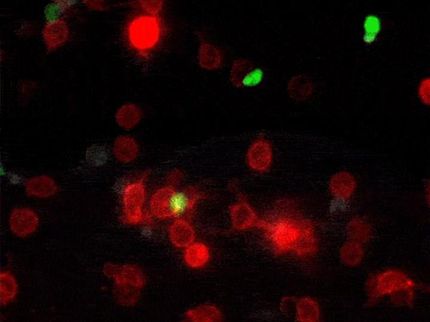Carbon nanotubes boost cancer-fighting cells
Advertisement
Yale University engineers have found that the defects in carbon nanotubes cause T cell antigens to cluster in the blood and stimulate the body's natural immune response. Their findings, which appear in the journal Langmuir, could improve current adoptive immunotherapy, a treatment used to boost the body's ability to fight cancer.
Adoptive immunotherapy involves extracting a patient's blood so that the number of naturally occurring T cells (a type of white blood cell) can reproduce more effectively in the laboratory. Although the body produces its own tumor-fighting T cells, they are often suppressed by the tumor and are too few to be effective. Scientists boost the production of T cells outside the body using different substances that encourage T cell antigens to cluster in high concentrations. The better these substances are at clustering T cell antigens, the greater the immune cell proliferation. Once enough T cells are produced, the blood is transferred back into the patient's body.
The Yale team had previously reported the unexpected effect that carbon nanotubes had on T cell production. They found that the antigens, when presented on the surface of the nanotubes, stimulated T cell response far more effectively than coating other substrates such as polystyrene in the antigens, even though the total amount of antigens used remained the same.
Now they have discovered the reason behind the increased stimulation. They found that the antigens cluster in high concentrations around the tiny defects found in the carbon nanotubes.
"Carbon nanotube bundles resemble a lymph node microenvironment, which has a labyrinth sort of geometry," said Tarek Fahmy, associate professor of chemical engineering and biomedical engineering at Yale and senior author of the paper. "The nanotube bundles seem to mimic the physiology and adsorb more antigens, promoting a greater immunological response."
Current adoptive immunotherapy takes weeks to produce enough T cells, but lab tests showed that the nanotubes produced the same T cell concentration in just one-third the time, Fahmy said.
Carbon nanotubes can cause problems, such as an embolism, when used in the body. But this isn't the case when they are used in blood that has been extracted from the patient, Fahmy said. Next, the team will work on a way to effectively remove the carbon nanotubes from the blood before it is returned to the patient.
"We think this is a really interesting use of carbon nanotubes. It's a way to exploit the unique properties of this material for biological application in a safe way."




























































